"Here comes the Memsahib," he said. She was walking over from her tent looking refreshed and cheerful and quite lovely. She had a very perfect oval face, so perfect that you expected her to be stupid. But she wasn't stupid, Wilson thought, no, not stupid.
When Ernest Hemingway wrote that—it's from his devastating story "The Short Happy Life of Francis Macomber"—the face he saw before him was no composite, no construct of the imagination. On the contrary, it was the face of a specific woman, bright, distinct, and blazingly, even disturbingly, real. It was a face that, in the five years since he'd first laid eyes on it, crossing from Cherbourg to New York aboard the Île de France, he'd seen many times in many places: aboard his own boat, Pilar, coolly fighting giant marlin in the blue water of the Gulf Stream; at the Club de Cazadores in Havana, standing elbow-to-elbow with the finest live pigeon shooters in the world; at the wheel of her Packard, roaring down the narrow Cuban backroads on yet another daiquiri-fueled thrill ride, seeing how far and fast she could go before his nerve broke and he begged her to slow down …
But where he saw that face most intimately and yet most mutably—as if in a dream that isn't quite a nightmare but haunts nevertheless, coloring one's waking moments like a stain—was inches from his own, on the twisted sheets of his bed at the Hotel Ambos Mundos in Havana. Room 511, to be precise. Hemingway's principal Cuban residence for most of the 1930s, it was ground zero for his torrid four-year affair with the model for Margot Macomber, a young (she was 22 when they met), impetuous, drop-dead gorgeous American socialite named Jane Kendall Mason. Indeed, Hemingway boasted that she'd sometimes climb through the hotel window to sleep with him, the not-so-subtle implication being that Papa swung the heavy lumber and she couldn't get enough of it.
She brought plenty to the party, too. Impossibly beautiful—Pond's Cold Cream had used her likeness in an advertising campaign, comparing her luminous features to those of a Botticelli Venus—she also oozed sexuality. Hemingway himself described her as "about the most uninhibited person I ever met."
One tends to break out in a sweat just pondering that.
But there was more. Jane Mason was unable to conceive children, meaning that there was no fear of pregnancy with her and no need for any form of birth control. This had to be as liberating to her partners and her as the introduction of the Pill was to couples in the 1960s. And while at the time it would have given her a leg up in the sack race against practically any other woman her age, it gave her a particular advantage over Pauline, Hemingway's wife. Advised by her doctors not to have more children after the difficult birth of their second son, Gregory, in 1931, she insisted that they practice coitus interruptus—the only method of birth control permitted by her Catholic faith.
Now, a lot of men find this method less than satisfying, but for a man like Hemingway, whose ego was inseparable from his penis and for whom sexual potency was a critical measure of self-worth (see Jake Barnes), it was close to intolerable. Pauline, calling herself "a bloody fool," blamed it for the break-up of their marriage, although when Hemingway finally left her it wasn't for Jane Mason but for another stunning blonde, Martha Gellhorn. They met toward the end of 1936 in Sloppy Joe's, Hemingway's favorite Key West watering hole; soon, repeating the pattern he'd established a decade earlier in Paris when he became infatuated with Pauline while married to his first wife, Hadley, he essentially installed Martha as a member of their household.
By then the affair with Jane Mason had run its course. They'd started up in 1932, endured a number of separations and even tried to break it off a time or two, but had always fallen back into each other's arms. For both of them, it was all about the pleasure of the moment. Marriage was never on the table; lust, not love, fueled the relationship, although other additives—conquest, payback, the thrill of the illicit?—undoubtedly boosted the octane level.
Besides, Hemingway wasn't remotely wealthy enough for Jane to consider as a prospective husband. And Jane, who'd survived a half-hearted suicide attempt in 1933 and subsequently undergone months of intensive psychotherapy, was far too volatile and self-destructive for Hemingway to give a second thought to as a potential wife. Hemingway was the classic example of a man who wants his wife to be a saint in the living room and a devil in the bedroom, and while Jane Mason could be one of those she was constitutionally incapable of being the other.
Hell, she wasn't even exclusive in her adultery: While on safari in East Africa in 1935 she had a fling with Col. Richard Cooper, a dashing Brit who owned a coffee plantation in Tanganyika and had, a year earlier, hosted the Hemingway party on the safari that spawned Green Hills of Africa. When Cooper crossed the pond the following year to fish in Bimini and travel in the United States and Mexico, he and Jane picked up where they left off—a fact she made no attempt to hide from Hemingway.
The really shocking thing is that while on safari Jane apparently didn't sleep with her white hunter, that paragon of marital fidelity Bror Blixen.
If Hemingway wasn't intimidated by Jane, exactly, it's obvious that her skills as a sportswoman, which he found attractive to a point, ultimately exceeded his comfort level. It was all well and good that she was an accomplished equestrienne, deep-sea angler, live-pigeon shooter, big-game hunter, and so on, even that she could hold her liquor like nobody's business. (When she wasn't drinking daiquiris she liked to knock back straight gin with a champagne chaser.) The problem was that she was damn near as good as Hemingway at all these things, maybe even better at some of them—and over the long haul that simply wouldn't do.
In any event, at some point in 1936 they had "a violent and bitter break," in the words of one of Hemingway's many biographers. The resumption of Jane's affair with Richard Cooper is often cited but in point of fact no one knows for certain what finally caused the axe to fall, or even precisely when. Many sources say April but Arnold Gingrich, Hemingway's editor at Esquire in the '30s—and, later, Jane's fourth husband—recalled fishing aboard the Pilar in June of that year with Hemingway, Jane, Pauline, and Pauline's sister Virginia Pfeiffer, an uncloseted lesbian who later attempted, without success, to add her name to Jane's growing list of lovers. Whew!
However ugly it was at the time, Hemingway's split with Jane Mason gave him the emotional distance and icy objectivity he needed to use her, pitilessly, as the raw material for his art. And what a rich vein it proved to be. Here, again, is Wilson, the white hunter in "The Short Happy Life of Francis Macomber:"
… They are, he thought, the hardest in the world; the hardest, the cruelest, the most predatory and the most attractive and their men have softened or gone to pieces nervously as they have hardened … He was grateful that he had gone through his education on American women before now because this was a very attractive one.
Yes, he knew exactly what Margot Macomber was—but this knowledge was no impediment to a spot of jiggery-pokery when she presented herself at his tent that night. He understood, of course, that his pleasure was merely a by-product of her true motivation: to inflict another wound on her husband.
Jane Kendall Mason was born Jane Welsh in 1909, but her story doesn't really start until a decade later. That's when her mother, Elizabeth, an attractive divorceé who'd created a niche for herself singing at private parties for New York City's über-wealthy, caught the eye of Wall Street tycoon Lyman Kendall. In breathtakingly short order, Kendall—whose net worth was estimated at a cool $20 million—had divorced his wife (on such extravagantly generous terms that the press dubbed him "The Alimony King"), married Elizabeth, and adopted ten-year-old Jane.
They made their home in fashionable Tuxedo Park, just north of the city, maintained residences in Miami and Washington, D.C. as well, and sailed to Europe often for extended stays. Jane attended exclusive private schools (where she displayed an aptitude for drawing and sculpture), competed in horse shows at Madison Square Garden, and at the age of 17 made not one but two debuts in Washington society. By then they were living at Kentsdale, the 1,000-acre estate near Potomac, Maryland, that Lyman Kendall had begun developing in 1925.
By then, too, the world was beginning to take notice of Jane Kendall. "The most beautiful girl ever to enter the White House," first lady Grace Coolidge gushed. "One of the very best types of American girl," portrait artist Howard Chandler Christy declared. Her life was idyllic, indulged, and by all appearances happy, although Arnold Gingrich, in his memoir Toys of a Lifetime, says that as a child she witnessed "a searing domestic tragedy" one Christmas morning that forever after tainted her enjoyment of the holidays.
In 1927, at the age of 18, Jane wed Grant Mason, Jr., in a lavish ceremony at Kentsdale that was the talk of Eastern society. A handsome if utterly conventional Yalie (read: a bit of a stiff) who was himself an heir to enormous wealth, Mason headed up Pan-American Airways' Carribean operations out of an office in Cuba. Whatever feelings the bride and groom may have had for one another, a whiff of the arranged lingers in the air around their marriage.
The newlyweds moved to Jaimanitas, a grand estate 30 minutes west of Havana staffed by nine servants. There, Grant Mason threw himself into his work—and his young wife, with time on her hands and money to burn, began earning her reputation as the Wild Child of the American expat set. She threw fabulously over-the-top parties, rum-soaked revels that could last 24 hours (or until there was no one left standing) and featured releases of pigeons dyed in tropical hues; she was a familiar sight at the clubs, casinos, and horse tracks, anywhere and everywhere the liquor flowed and the rich rubbed elbows, among other body parts. Unstoppable and irresistible, she created her own weather. She was Paris Hilton with brains, Lindsay Lohan without the rap sheet, Kim Kardashian minus the stank.
Then came that fateful meeting, in September, 1931, aboard the Île de France. Pauline, seven months pregnant, hit it off surprisingly well with Jane; Hemingway was smitten, and while he and Grant Mason never warmed up to one another much they got along well enough. The Hemingways lived in Key West at the time, but Ernest made the hop to Cuba frequently in order to fish and, perhaps even more importantly, work without distractions, renting room 511 at the Hotel Ambos Mundos for $1.50 a night. Occasionally Pauline and the children would visit him there, but most often he was footloose, fancy-free … and bird-dogging Jane Mason at every opportunity.
For a while they were "just friends," fishing, shooting, drinking, and generally palling around. Jane was totally at ease in traditionally male environments; a Cuban contemporary of theirs recalled that he "had never known a woman so perfectly at home in the almost exclusive company of men and who insisted on being treated by them as 'one of the boys.'"
It's often said that Hemingway "introduced" Jane to big-game fishing but Arnold Gingrich, writing after Hemingway's death, claimed that she had her own boat before he did, that they'd pioneered the Cuban blue water fishery together, and that at the time of that trip aboard the Pilar in June of '36 she had "at least as much big-game fishing experience as he had." Gingrich—who, again, was Jane's husband at the time—also wrote that she "had shot elephants and rhino in Tanganyika and Kenya with Philip Percival before Hemingway had ever heard of him."
Maybe, maybe not. At any rate, sometime around April or May of 1932 Ernest Hemingway and Jane Kendall Mason added a new recreational activity to their repertoire, one that's typically performed in private on a horizontal axis. And they continued to indulge in this exercise, on-and-off and with varying degrees of frequency, for the next four years. Their spouses figured out what was going on pretty early in the game, but in public, at least, everyone continued to hew to the status quo and maintain a façade of normalcy. With adulterous affairs as common as hangovers in that overheated environment—"white mischief," indeed—it was simply the civilized thing to do.
Here's how bizarrely perverse it all was: When the Masons adopted two little boys from England (remember, Jane was unable to conceive), they named Hemingway the godfather of the elder one! It should surprise no one that Jane, who didn't have a maternal bone (or even a maternal gene) in her body, happily delegated her sons' upbringing to a governess. One of her rare gestures of affection was to shoot a zebra foal on her safari with Bror Blixen and have it made into a rocking horse for the children. Blixen undoubtedly took a dim view of this but of course Jane didn't play by the rules.
What the Memsahib wanted, the Memsahib got.
Writing "The Short Happy Life" should have been an act of catharsis for Hemingway, purging him of the residual toxins from his affair with Jane. In fact, the venom still dripped from his quill, and he used it to draw a character who, if anything, is even nastier than Margot Macomber: Helène Bradley, the adulterous and all but insatiable femme fatale of his 1937 novel To Have and Have Not.
In the book's most notorious scene, Helène's husband (a thinly disguised Grant Mason) finds her in flagrante delicto with her lover. She orders the husband to get out, he meekly obeys … but her lover, unnerved by the encounter, loses his, um, enthusiasm. When he can't get it back Helène screams "My God, don't you know anything? Haven't you any regard for a woman?" Then she slaps him across the face. Twice.
Knowing what we know now, it's hard not to wonder how much of that was fiction, and how much autobiography.
But the plot thickens. When he'd completed the manuscript for To Have and Have Not, Hemingway sent a copy to Gingrich in Chicago, where Esquire had its offices. Hemingway had contributed to Esquire since its debut in 1933, and his by-line became such a guarantee of brisk sales that Gingrich called him the magazine's "principal asset." The back-scratching cut both ways: When Hemingway lacked the ready cash to pay for the Pilar in the spring of '34, Gingrich advanced him the three grand he needed to close the deal.
After reading To Have and Have Not, though, Gingrich was horrified. Not because it was so bad (although it was), but because the characters of Helène and Richard Bradley were so transparently based on Jane and Grant Mason—and the portraits Hemingway had drawn of them were scandalous at best and at worst potentially libelous.
He flew to Key West to try to persuade Hemingway to tone it down, but succeeded only in pissing him off and, for all intents and purposes, severing their relationship both personal and professional. Years later, when one of his sons asked him why he'd abruptly stopped writing for Esquire, Hemingway replied that he and Gingrich "disagreed about a blonde."
But here's the real kicker: By the time of that argument in Key West, Gingrich had had his own tryst with Jane in New York City!
Oh, how that girl got around …
Hemingway always insisted that Jane was "flattered" by her portrayal as Margot Macomber (who, lest anyone forget, shoots her husband in the back of the head, accidentally on purpose, after bedding the white hunter). Sometime in 1937 or '38, though, while Hemingway was off with Martha Gellhorn covering the Spanish Civil War, Jane got in a dig of her own, hiring away the first mate of the Pilar, Carlos Gutiérrez, to serve as the first mate of her boat. Hemingway promoted the story that Jane "stole" Gutiérrez out of anger over his affair with Gellhorn, and whether that factored into it or not Jane undoubtedly felt that at some level she was hitting him where it hurt.
Well, it may have stung for a moment or two, but it also opened the door for Hemingway to hire the first mate whose name everyone remembers, Gregorio Fuentes. Fuentes is generally agreed to be the model for Santiago, the stoic hero of The Old Man and the Sea, although in another of the seemingly endless twists and turns one encounters attempting to follow Hemingway's trail, it was actually Gutiérrez who told him the story of "an old man fishing alone in his skiff (who) hooked a great marlin." Hemingway first recounted the bones of this tale in the October 1936 Esquire, some 15 years before fleshing it out into the novel that helped secure for him the greatest honor a writer can receive, the Nobel Prize for Literature, in 1954.
And what of Jane Mason? After divorcing her first husband in 1939, she sandwiched two subsequent marriages, both short-lived, around an affair with the editor of Reader's Digest. Following her third divorce, she married Arnold Gingrich in 1955. "That shit!," Hemingway reportedly bellowed when he heard. The irony is breathtaking: What made Gingrich wealthy enough to attract Jane (and to afford her) was Esquire, what made Esquire an immediate success was Hemingway … and now Hemingway's mistress when he was writing for Esquire was the wife of its founding editor and current publisher.
Gingrich himself had been married four times by then, although three of those unions were to the same woman (!) and the fourth, to a woman who shared his passion for fly-fishing, lasted a whopping eight months. In his 1965 memoir The Well-Tempered Angler, he wryly notes that while he hesitates to identify Jane as his fifth wife , "she herself has been married four times and a man must try any way he can to assert rank."
The Well-Tempered Angler is dedicated to Jane, and whenever Gingrich speaks of her therein his tone is admiring, even adoring. Here he is on her achievements as a sportswoman: "She shot two elephants so big that their tusks comprise the posts of a monumental four-poster bed, and a rhinoceros that was the biggest of the year, and while she never held any big game fishing record, she has insisted that every trout I ever caught was smaller than something she had once used for bait, and it is a matter of record that while fishing with her second husband she tried to throw back a 9-pound smallmouth as an object that nobody could conceivably want to keep."
He tells of fishing for Atlantic salmon with Jane in Iceland and Ireland alongside such sporting luminaries as A.J. McClane and Charles Ritz; he mentions that Jane gave him a Paul Young "Martha Marie" fly rod as a Christmas gift in 1959, just a few months before Young's death. In this and in Toys of a Lifetime, published a year after Well-Tempered Angler, Gingrich seems the bemused husband who's not merely tolerant of his wife's eccentricities and peccadilloes but charmed by them—as when she set fire to their suite in a midtown Manhattan hotel, for example.
The reality, as it invariably is, was much messier. Their marriage was described as "stormy;" Gingrich apparently moved out after a couple of their frequent rows, although he always moved back in. (They lived at several addresses in New York before settling in Ridgewood, New Jersey, in 1962.) He was also said to be extremely possessive of Jane, but you have to cut him some slack on that score. He knew her track record.
Jane was difficult, demanding, self-absorbed—"high-maintenance," in today's vocabulary. The thing that clearly took the heaviest toll on their relationship, though, was her declining health. In Toys, Gingrich speaks of frequent trips to Baltimore in order for Jane to receive treatments at Johns Hopkins; he also alludes to ambulance rides to a hospital in New York. He provides no specifics regarding her diagnosis, however. One source claims that she suffered from hypoglycemia but whatever ailed her the inevitable conclusion is that her lifestyle, in particular the years of hard drinking, had a hell of a lot to do with it.
When you fly close to the sun, at the very least you're going to singe your wings. Jane burst into flame.
She could ignore the rules of society but the rules of biology are ultimately inescapable. In 1964, at the age of only 55, she suffered a stroke that rendered her a semi-invalid for the rest of her life. The best snapshot of her in those days comes from the writer M.F.K. Fisher, who in a 1968 letter described her as "a hopeless and completely helpless paralytic and ex-alcoholic" who is "cared for like a rare orchid."
By then Fisher and Gingrich were two years into a relationship that would continue until Gingrich's death, from lung cancer, in 1976. They'd first met in 1939, and while their affair was carried out mostly at long-distance—Fisher lived in the California wine country—it was nevertheless intense. They exchanged literally thousands of letters, rendezvoused discreetly when they could, and, in the words of one observer, "epitomized a kind of grown-up glamour." Sophisticated, witty, and piercingly intelligent, Fisher wrote about food—and no one, ever, has written more elegantly, or more sensually, about the acts of cooking and eating. Gingrich tips his hand in Toys (published the year their affair began) when, recalling a luncheon with her in 1945, he rhapsodizes "M.F.K. Fisher was then, and for that matter is still, my idea of the world's most beautiful author, both in person and in prose."
As for Jane, she was a ravaged husk, alone and angry at the world, each day the same as the one before and the one that came after. Her great beauty, the one friend she could always rely on, had deserted her. For a woman who'd been a force of nature, cutting a wide swath both in the Great Outdoors and the Great Indoors, such grievous physical reduction must have been unimaginably difficult—and she endured it for 17 years. Whether she was aware of her husband's infidelity, or of the bitter irony of finding herself in the position of the wronged wife—the shoe on the other foot, and all that—is impossible to say.
Still, she was capable of flashes of insight. Consider the blackly humorous epitaph she composed for her tombstone: Talents too many, not enough of any. When she finally slipped away in 1981, the photographs of four men regarded her from her bedside: Grant Mason, Richard Cooper, Arnold Gingrich, and Ernest Hemingway.




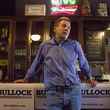
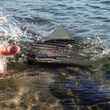
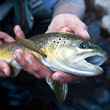




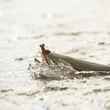
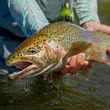













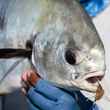
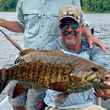


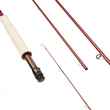

Comments
Mark replied on Permalink
Wow, fantastic and interesting article about Jane Mason! I just read about Hemingway's relationship with her in "Hemingway in Love," by A.E. Hotchner, it's nice to read more of the story of her fascinating life.
Pages